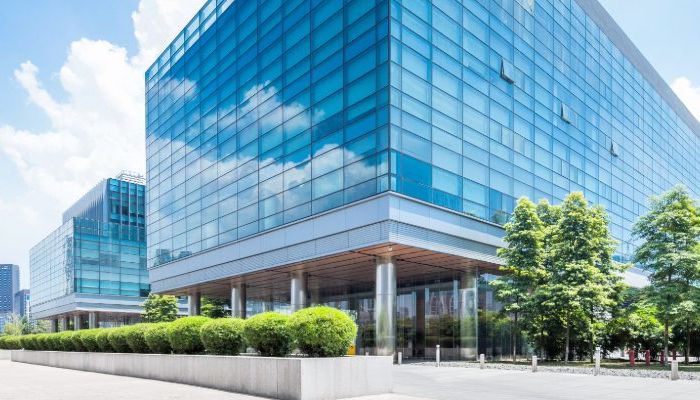Preventive Maintenance
Preventive maintenance is one of the most essential parts of a company’s maintenance schedule, and not just because it can help you save a lot of money. In this guide, you will learn what preventive maintenance is, see some examples of it, and learn some of the best techniques for establishing and maintaining a preventive maintenance program.
What Is Preventive Maintenance?
Preventive maintenance is the process of repairing an asset before it breaks to maximize its useful lifespan while reducing costs. Repairing assets is usually more affordable than replacing them, so regular maintenance can drastically cut costs.
For most companies, preventive maintenance comes in three types:
- Structural
- Hardware
- Software
Structural Maintenance
Structural maintenance includes everything required to keep a physical building like an office or warehouse running as intended. The structure of the building consists of the foundation, the walls, the floors and ceilings, pipes, wiring, heating and cooling, lighting, and other systems.
This is the least frequent common of maintenance for most companies because well-built structures are reliable and only need the occasional tune-up. However, structural repairs can also be some of the most expensive types of maintenance, so many companies prefer to work in newer buildings that don’t have the same maintenance costs as older structures.
Hardware Maintenance
Hardware maintenance includes all physical objects and supplies not directly linked to the structure. This includes computers, copiers, phone systems, general office supplies, and similar items. Part of the complexity of managing hardware systems comes from the fact that many of them break down at different rates.
Is reactive maintenance better here? Reactive maintenance – or repairing things after they break – is an excellent choice for some hardware. It’s especially appropriate for equipment that doesn’t break down very often and is difficult to repair when it does. For example, most staplers last for a very long time but are cheaper to replace than to repair once they do go wrong.
Software Maintenance
Software maintenance is the most-frequent need for many companies these days and includes everything from operating systems to custom, company-specific software. Software problems are a leading cause of downtime for companies, so the right types of preventive maintenance can employees working and productive.
Examples Of Preventive Maintenance
Now that we know a little more about the three categories of preventive maintenance, let’s look at some common examples of preventive maintenance for each type.
Structural Maintenance: Cleaning Gutters And Pipes
Some buildings and offices have gutters, pipes, and other systems that can get clogged over time. If these clogs get big enough to cause a problem, they could end up dumping dirty water onto customers, backing up toilets, or even damaging pipes and forcing costly renovations.
Preventive maintenance is as simple as giving gutters and pipes a straightforward cleaning on a predetermined schedule. For most companies, this can be done annually because the buildups are too slow to require more frequent cleans. Pipes are trickier than gutters, but many companies sell cleaning products that you can pour down drains to reduce buildups and future clogs.
Now let’s look at a tougher example.
Structural Maintenance: Removing Mold
Mold is a serious problem in some buildings. It can damage walls, weaken floors, and sicken workers. That means structural renovations and noticeably lower productivity, both of which are bad for the bottom line.
Preventing mold can require a variety of measures, ranging from installing dehumidifiers that inhibit mold growth to using cleaning chemicals on walls and other surfaces that are prone to problems. Some companies need to perform this maintenance regularly while others can get away with only doing it every few months.
Hardware Maintenance: Lighting
Most companies need light to function. In fact, chances are your company falls under local, state, or federal regulations that require a certain amount of lighting in specific areas.
But wait, you say, isn’t that going a little overboard on maintenance? It’s okay to wait until the bulb burns out to replace it, right? Well, that’s usually true, but it’s not always correct.
Imagine that you have an important client over, and right in the middle of your meeting, the light goes out. That’s going to reflect poorly on your company, especially if you’ve made any other mistakes while your client is there to see them. Those feelings could be the difference between getting or losing a major contract.
In short, even the small things can matter to your company, so take the time to determine which places should get preventive maintenance and which you can genuinely leave for later.
Software Maintenance: System Security Updates
The digital landscape is continually changing and generating new threats that could impact your company. Minimizing the risk of viruses, loss of data, theft of intellectual property, and other digital issues requires installing and updating security software on all of your computers.
At some companies, this is so important that it requires hiring an entire department to handle it. These security specialists often check every single computer in the company and use a computerized maintenance management system (CMMS) to generate and track each work order. Maintenance software is generally better than tracking things manually.
Preventive Maintenance Best Practices
Now that you’re familiar with some examples of preventive maintenance, and how they can help, here are some of the best practices for establishing a maintenance plan.
Step 1: Determine The Frequency Of Maintenance For Everything
To start with, take inventory of your company’s assets. That includes all of the structures, hardware, and software you use on a day-to-day basis. Once you have the list, research each item and see if they need regular maintenance.
This is the most labor-intensive part of creating a preventive maintenance plan, but it’s essential to making the right plan. If you don’t do maintenance often enough, then it’s going to break anyway, and that defeats the purpose. If you do the maintenance too often, it’s more expensive than necessary and hurts the bottom line.
It’s okay if you can’t establish a frequency for everything. Most people genuinely don’t know how fast their pipes clog, so it can be hard to explain a maintenance schedule. For things that don’t seem to need maintenance very often, schedule a checkup twice a year to take another look and determine if it needs maintenance.
(This is one of the little secrets of the industry. It’s okay to wait on doing the maintenance until something needs it.)
Do I Have To Calculate The Costs For Everything? It’s best if you can, but you can also limit things to just your part of the company if the business is too large. If you can demonstrate the value of preventive maintenance, then other departments will jump on the bandwagon soon enough.
Step 2: Calculate The Costs Of Maintenance And Replacement
Now that you know how often you need to maintain things calculate the actual cost of both maintenance and replacement. For maintenance, this includes employee work time, physical supplies, and any other relevant costs. For replacement, calculate the total cost of replacement, including lowered productivity while replacing is happening.
Now compare these two numbers.
If the replacement cost is lower, take that item off the maintenance schedule. Sometimes it is more affordable to replace something, so don’t feel like you have to maintain it unless there’s a reason to keep the old thing around.
If the maintenance cost is lower, keep it on the schedule and extrapolate the cost out through two replacement cycles. This will give you a benchmark to explain just how much maintenance will save you over time, and that’s going to be meaningful.
Expert Tip: Don’t Forget To Predict The Availability Of Supplies
One of the most common mistakes people make when deciding whether to repair or replace something is forgetting to account for access to parts. If you don’t have the right supplies, you might not be able to repair something at all. Similarly, if you literally cannot replace it, maintenance may be your only option until you can find a viable alternative.
Nobody can perfectly predict the market, but well-established and stable companies are more likely to stick around. Try to avoid betting your company’s future on anything that you can’t replace if you have to.
Step 3: Create A Schedule
Now that you have all of your information, it’s time to create a maintenance schedule for all of your company’s assets. The level of detail varies by companies, but some locations are as specific as daily maintenance plans.
Be sure to spread out any larger jobs if you can. Replacing every single light in a building can take quite a long time, but replacing lights in a single room or section can be done quickly and easily. Staggered maintenance is a key part of minimizing unexpected costs, too.
The final schedule should be a five-year maintenance plan, with additional notes for anything that you need to maintain less often. The reason it should be five years is that some things have irregular schedules. For example, if you maintain something every eight months, you might maintain it once in the first year and then twice in the second year.
Do not try to delay necessary maintenance just to increase savings; that leads to extra costs later on. However, it is appropriate to examine things and determine whether or not they need maintenance, then schedule another checkup in the future if they don’t currently need help.
Step 4: Justify All Of This To Senior Management
At most companies, senior management really only cares about maximizing profits and reducing expenses. Fortunately, thanks to the work you did earlier, this is going to be simple.
The most important thing to address – and therefore, the first thing you should mention – is the savings you expect to receive from preventive maintenance. The higher your savings are, the better, but don’t fudge the numbers to make them look better than they really are.
Once you’ve convinced senior management that preventive maintenance is excellent for the bottom line, you should be able to get all the support you need to turn your plan into reality.
As part of this process, consider investing in maintenance management software. This can help you keep track of the maintenance plan, automatically remind people when there’s something they need to do, and otherwise maximize the effectiveness of your preventive maintenance plan.










